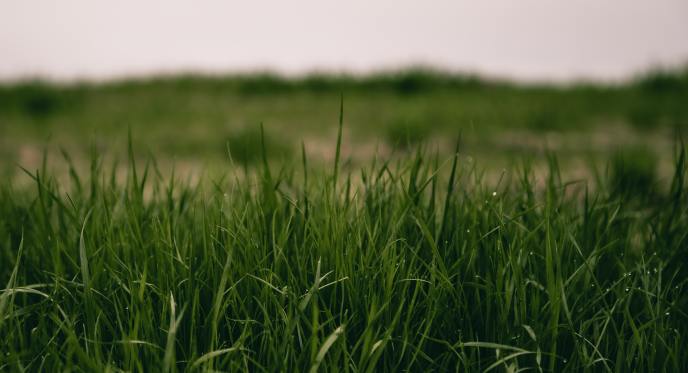As the summer months wind to a close, our lawns are often overlooked. Many of us turn our attention towards the changing leaves and allow our yards to grow unruly as they are overshadowed by vibrant shades of red and orange. While it’s easy to slip into the mindset that our lawns will soon be covered by snow and no longer require our attention, fall is actually a very important season for lawn care! Before your yard is enveloped by the cold blanket of winter, provide the care it needs for a beautiful yard next season.

Proper mowing practice is a key component to fall lawn care. It not only keeps grass looking tidy now, but gives you a head start for spring. While it is best to let your grass grow a touch longer during the heat of summer, we recommend maintaining your yard at or just below 2.5” from now till snowfall. When long grass is buried beneath snow it quickly flattens and dies creating a thick layer of thatch that you'll have to clean up come spring.
Another important piece to the fall lawn care puzzle is weed control. Believe it or not, the best way to control weeds isn't with chemicals or treatments, it is simply encouraging a thick carpet of grass! When the lawn is full of lush, vigorous grass, weeds are much less likely to emerge. If you do have a weedy yard, fall is the best time to apply a post-emergent broadleaf herbicide to kill off any unwanted plants and get to growing that thick sea of green next season.

We can encourage thicker turf by sowing seeds in barren spots, over seeding and fertilizing – all of which are best done between September and November. When filling a bald spot of your yard, it is important to first select the correct species of grass for your yard, remember to keep the soil evenly moist and refrain from disturbing the seedlings as they establish. Overseeding is another great way to give a tired lawn a bit of a facelift. After prepping your yard and soil, broadcast seed with a spreader for even coverage.
Fall is also a great time to address compacted soil and thatch, both of which can inhibit vigorous lawn growth. Thatch is a tangled matt of living and dead plant material that lies on the soil surface. While this dead material can provide nutrients as it decomposes, it can also harbor problematic insects and disease. Highly trafficked lawns often experience compaction which slows the movement of water, nutrients and oxygen in the soil structure. Aervating and dethatching can be performed by your local landscape and lawn experts and should be considered annually for yards that see alot of use.
If you have questions about how to best care for your lawn this fall, stop by and chat with our expert staff.

